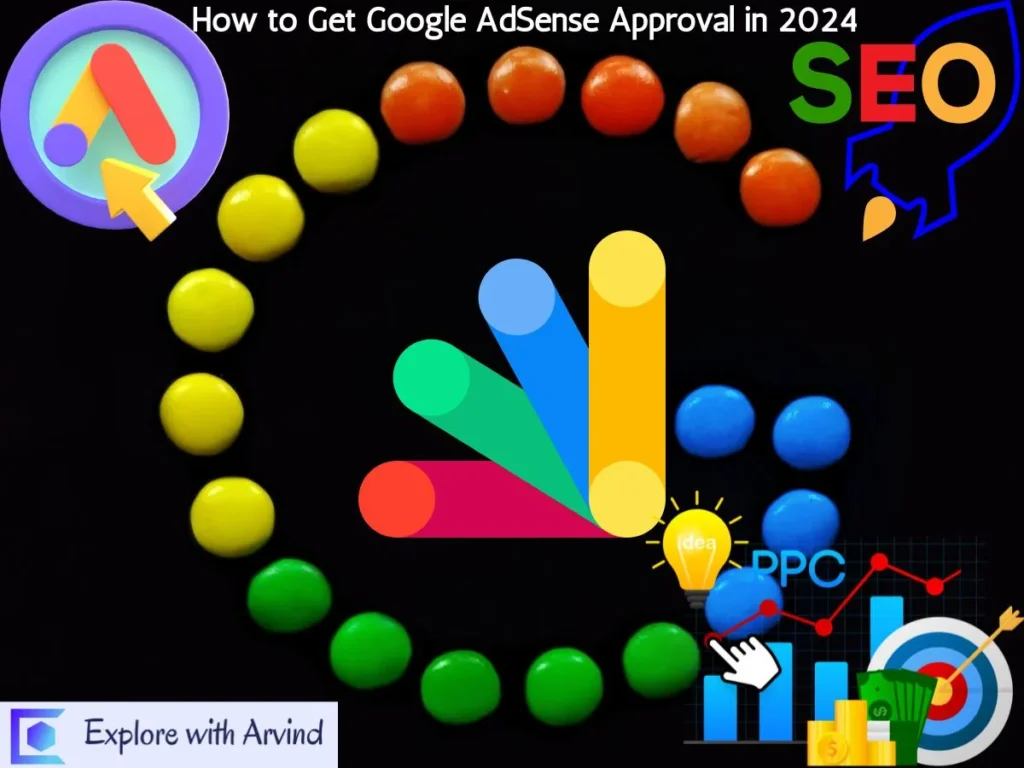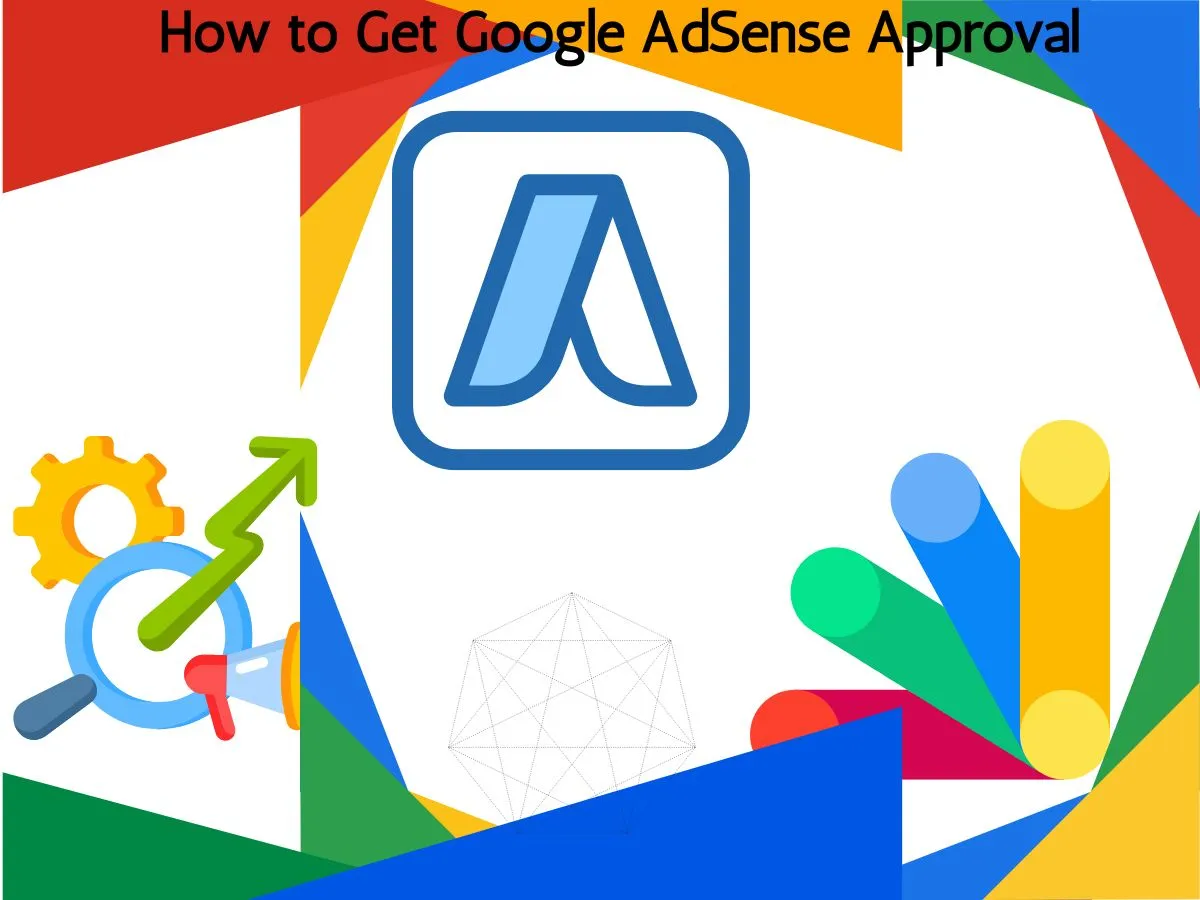Table of Contents
ToggleGoogle AdSense and How You Can Get Its Approval
Learn the essential steps to get Google AdSense approval for your website. Our comprehensive guide covers high-quality content creation, user-friendly design, and effective traffic-building strategies to ensure your success. One saying is always true that “Content is King”, means do whatever you want, select whichever niche you want but keep your content fresh and informative, to get noticed.
Introduction to Google AdSense
Google AdSense is a powerful advertising platform that allows website owners to monetize their content by displaying relevant ads. Google AdSense approval can significantly enhance your website’s revenue stream, but obtaining approval requires understanding specific guidelines and adhering to best practices. This article delves into the comprehensive steps and strategies to get your website approved by Google AdSense.

Understanding Google AdSense Requirements
Eligibility Criteria
To be eligible for Google AdSense, your website must meet the following criteria:
Content Quality: Your site should have high-quality, original content. Avoid plagiarism and ensure your content provides value to readers.
Navigation: A clear and easy-to-navigate website is essential. Ensure all links work correctly and the overall user experience is seamless.
Privacy Policy: Include a privacy policy page to inform users about data collection and usage.
Google’s Policies: Adhere to Google’s program policies, including restrictions on certain content types such as adult content, violent content, and copyrighted material.
Step-by-Step Guide to Getting Google AdSense Approval
Step 1: Create High-Quality Content
High-quality content is the cornerstone of any successful application. Focus on the following aspects:
Originality: Ensure your content is unique and not copied from other sources.
Relevance: Write about topics that are relevant to your audience and niche.
Engagement: Use engaging and well-researched content that keeps readers on your site longer.
Step 2: Design a User-Friendly Website
Your website’s design and user experience play a critical role in getting AdSense approval. Consider the following tips:
Responsive Design: Ensure your site is mobile-friendly.
Fast Loading Speed: Optimize images and use caching to improve site speed.
Clear Navigation: Use a simple and intuitive menu structure.
Step 3: Create Essential Pages
Certain pages are crucial for Google AdSense approval:
About Us: This page should explain who you are and what your website is about.
Contact Us: Provide a way for visitors to get in touch with you.
Privacy Policy: Detail how user data is collected and used.
Step 4: Build Organic Traffic
Google values sites with genuine traffic. Use these strategies to build organic traffic:
SEO Optimization: Optimize your site for search engines (SEO)with relevant keywords, meta tags, and high-quality backlinks.
Social Media: Promote your content on social media platforms to drive traffic.
Regular Updates: Frequently update your site with fresh content to keep visitors coming back.
Step 5: Apply for Google AdSense
Once your site meets all the criteria, you can apply for Google AdSense. Follow these steps:
Sign Up: Go to the Google AdSense website and sign up for an account.
Add Code: After approval, you’ll receive an AdSense code to place on your website.
Verification: Google will review your site, which may take a few days to a couple of weeks.
Common Mistakes to Avoid
Avoiding common pitfalls can increase your chances of getting approved. Here are some mistakes to steer clear of:
Insufficient Content: Ensure you have enough content on your site. A minimum of 15-20 high-quality posts is recommended.
Low-Quality Traffic: Avoid buying traffic. Focus on organic, quality traffic.
Ignoring Google’s Policies: Regularly review Google’s policies to ensure compliance.
Enhancing Your Website Post-Approval
After obtaining approval, it’s crucial to maintain and enhance your website to maximize your AdSense earnings. Here are some tips:
Optimizing Ad Placement
Above the Fold: Place ads in visible areas, but avoid cluttering the site.
Responsive Ads: Use responsive ad units that adjust to different screen sizes.
A/B Testing: Experiment with different ad placements to see what works best.
Content Strategy
Regular Updates: Keep your content fresh and relevant.
Keyword Research: Use tools like Google Keyword Planner to find profitable keywords.
Engage Readers: Encourage comments and interactions to increase user engagement.
Monitoring Performance
Google Analytics: Use Google Analytics to track visitor behavior and ad performance.
AdSense Reports: Regularly check AdSense reports to see which ads perform best.
Adjust Strategies: Based on analytics, continually refine your content and ad strategies.
